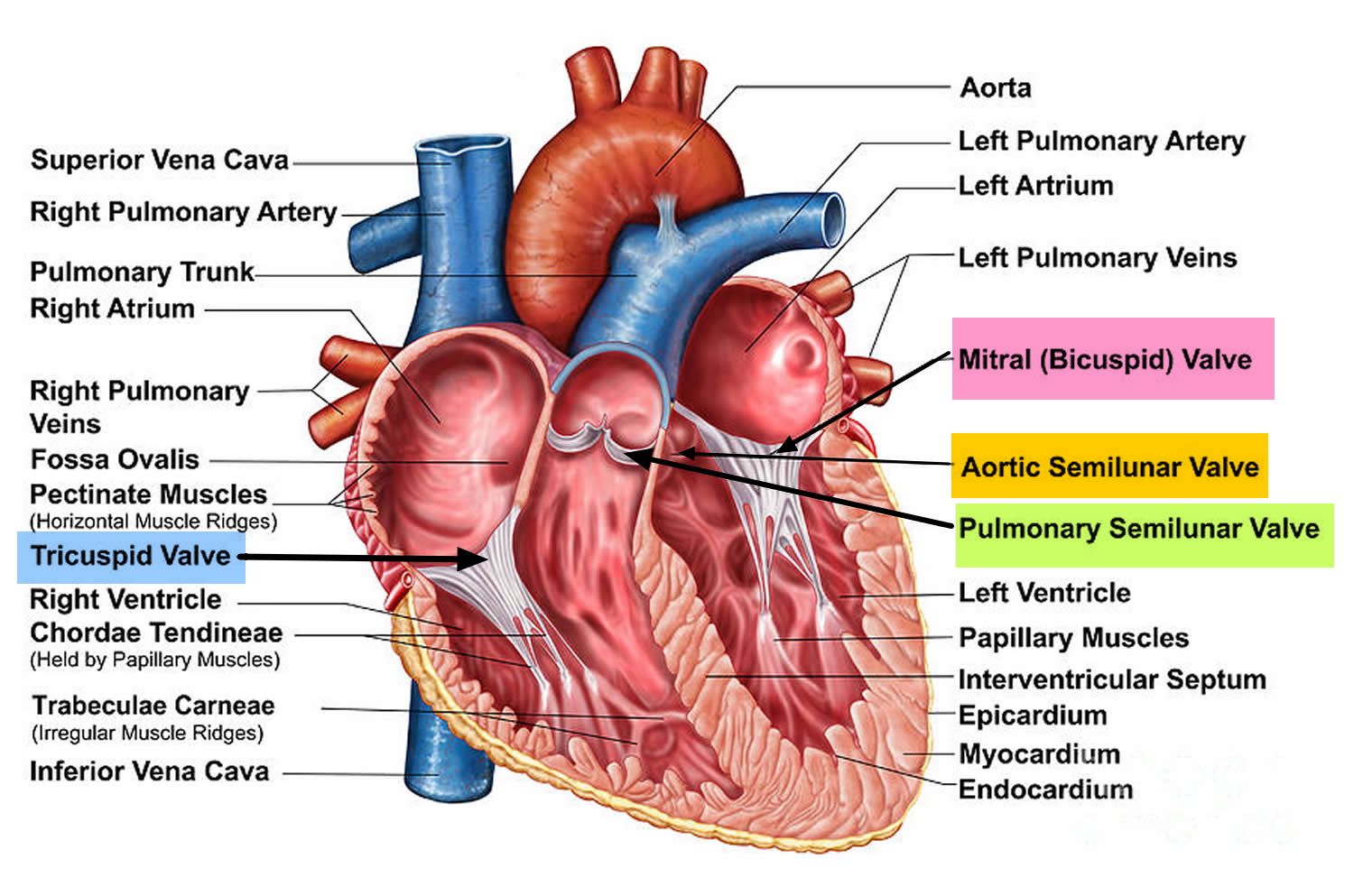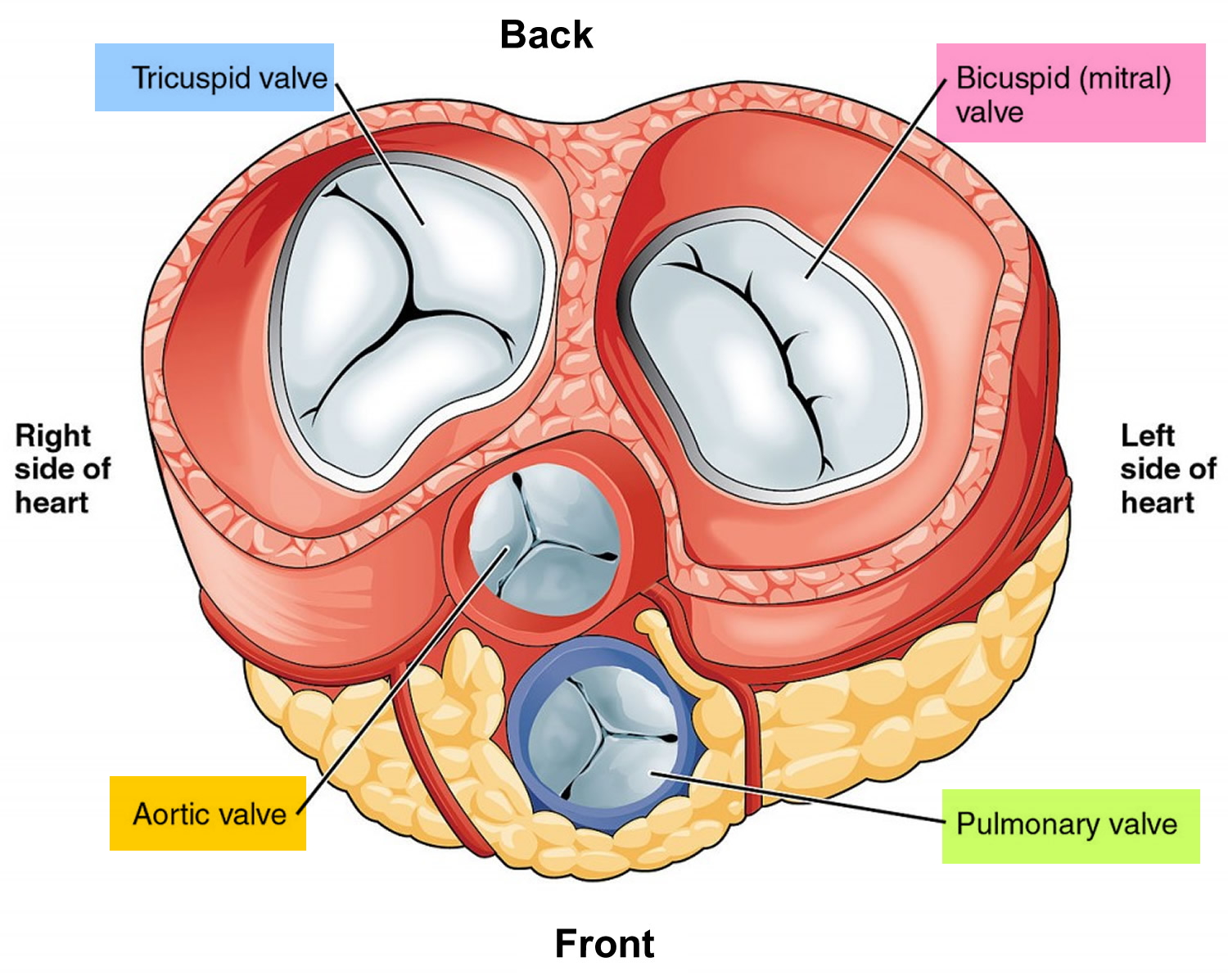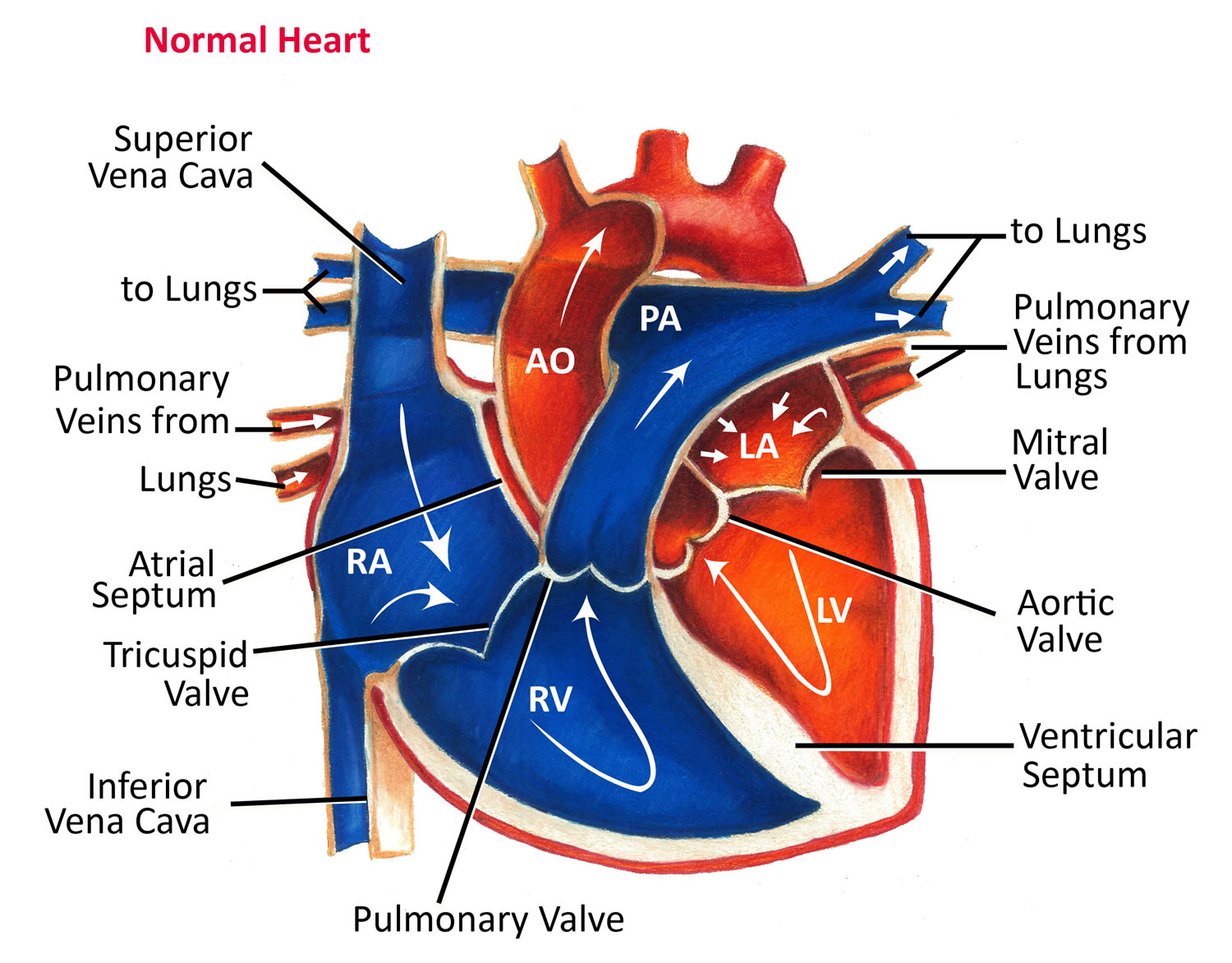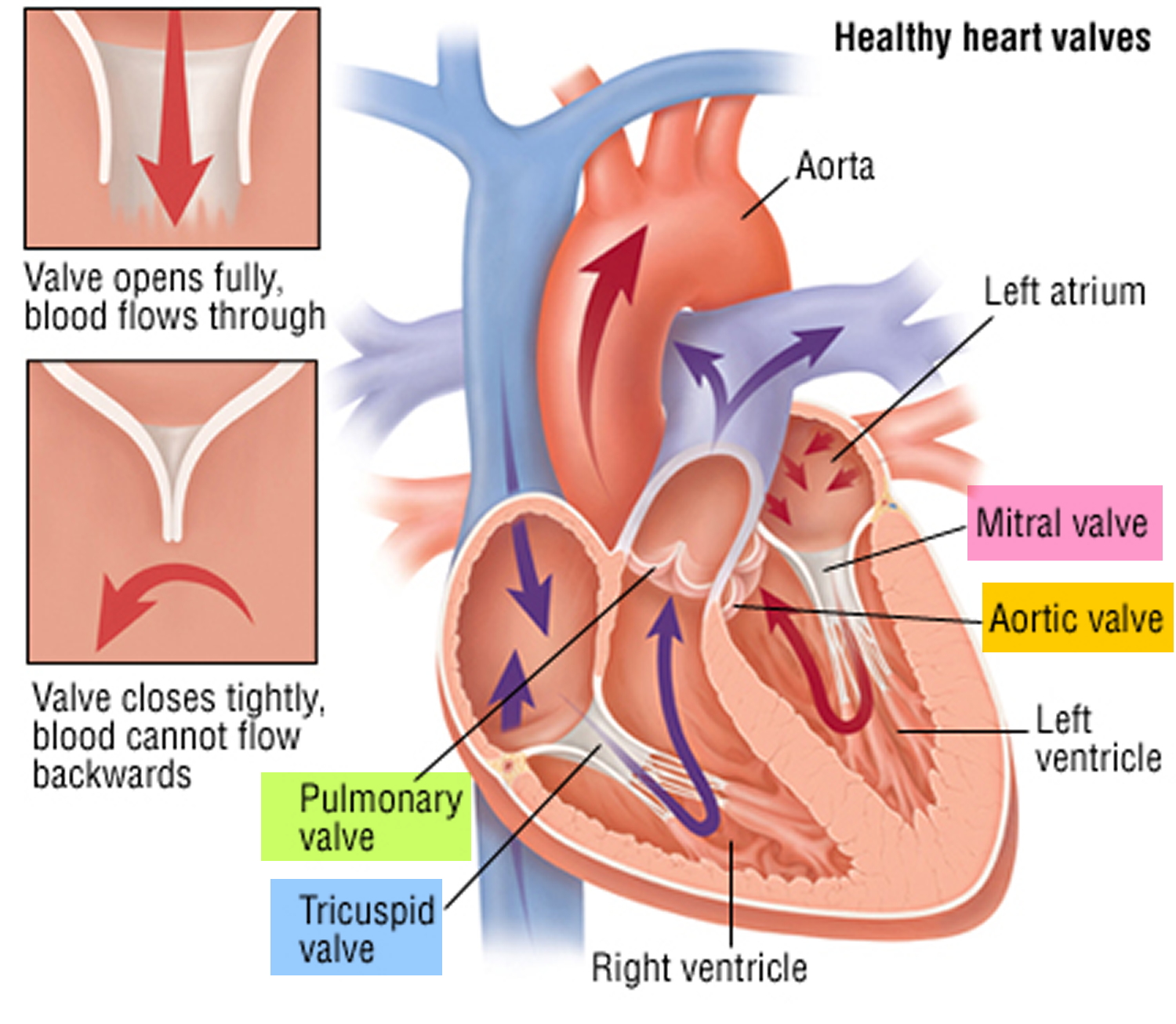Contents
What is a heart murmur ?
A heart murmur is a sound made by turbulent blood flow within the heart 1. Murmurs sometimes sound like a whooshing or swishing noise — made by turbulent blood in or near your heart. These sounds can be heard with a stethoscope. A normal heartbeat makes two sounds like “lubb-dupp” (sometimes described as “lub-DUP”), which are the sounds of your heart valves closing 2. Your doctor hears this sound with a stethoscope. A murmur can occur in a normal heart. Or it may indicate some problem within the heart.
Heart murmurs can be present at birth (congenital) or develop later in life 2. A heart murmur isn’t a disease — but murmurs may indicate an underlying heart problem.
Most often, the turbulence is normal. And the sound is called a benign flow or innocent murmur. Harmless murmurs may not cause symptoms and can happen when blood flows more rapidly than normal through the heart, for example in a person who is anxious, during exercise or has just finished exercising, pregnancy, has a high fever or rapid growth in children. About 10% of adults and 30% of children (most between the ages of 3 and 7) have a harmless murmur produced by a normal heart 3.
Abnormal murmurs may be a sign of a more serious heart condition, such as a congenital heart defect that is present since birth or heart valve disease.
Depending on the heart problem causing the abnormal murmurs, the murmurs may be associated with other symptoms such as shortness of breath, dizziness or fainting, bluish skin, or a chronic cough.
If a heart murmur is detected, your doctor will listen to the loudness, location and timing of your murmur to find out whether it is harmless or a sign of a more serious condition. If your doctor thinks you may have a more serious condition, your doctor may refer you to a cardiologist, or a doctor who specializes in the heart. The cardiologist may have you do other tests such as an electrocardiogram (EKG) or echocardiogram to look for heart rhythm or structural problems and see how well your heart is working.
A heart murmur itself does not require treatment. If it is caused by a more serious heart condition, your doctor may recommend treatment for that heart condition. Treatment may include medicines, cardiac catheterization, or surgery. The outlook and treatment for abnormal heart murmurs depend on the type and severity of the heart condition that is causing the murmur.
Heart murmur in babies and children
About 1 out of every 100 babies is born with a structural heart problem, or congenital heart defect 4. These babies may show signs of the defect as early as the first few days of life or not until later in childhood. Some kids won’t have any symptoms beyond a heart murmur, while others will such signs as:
- rapid breathing
- difficulty feeding
- blueness in the lips (called cyanosis)
- failure to thrive
An older child or teen might:
- be very tired
- have trouble exercising or doing physical activity
- have chest pain
See your doctor if your child has any of these symptoms.
What are heart valves ?
Your heart is a strong muscle about the size of the palm of your hand. Your body depends on the heart’s pumping action to deliver oxygen- and nutrient-rich blood to the body’s cells. When the cells are nourished properly, the body can function normally. Just like an engine makes a car go, the heart keeps your body running. The heart has two pumps separated by an inner wall called the septum. The right side of the heart pumps blood to the lungs to pick up oxygen. The left side of the heart receives the oxygen-rich blood from the lungs and pumps it to the body.
The heart has four chambers 5, two on the right and two on the left:
- Two upper chambers are called atrium (two is called an atria). The atria collect blood as it flows into the heart.
- Two lower chambers are called ventricles. The ventricles pump blood out of the heart to the lungs or other parts of the body.
The heart also has four valves that open and close to let blood flow from the atria to the ventricles and from the ventricles into the two large arteries connected to the heart in only one direction when the heart contracts (beats). The four heart valves are:
- Tricuspid valve, located between the right atrium and right ventricle
- Pulmonary or pulmonic valve, between the right ventricle and the pulmonary artery. This artery carries blood from the heart to the lungs.
- Mitral valve, between the left atrium and left ventricle
- Aortic valve, between the left ventricle and the aorta. This aorta carries blood from the heart to the body.
Each valve has a set of flaps (also called leaflets or cusps). The mitral valve has two flaps; the others have three. Valves are like doors that open and close. They open to allow blood to flow through to the next chamber or to one of the arteries. Then they shut to keep blood from flowing backward. Blood flow occurs only when there’s a difference in pressure across the valves, which causes them to open. Under normal conditions, the valves permit blood to flow in only one direction.
The heart four chambers and four valves and is connected to various blood vessels. Veins are blood vessels that carry blood from the body to the heart. Arteries are blood vessels that carry blood away from the heart to the body.
The heart pumps blood to the lungs and to all the body’s tissues by a sequence of highly organized contractions of the four chambers. For the heart to function properly, the four chambers must beat in an organized way.
When the heart’s valves open and close, they make a “lub-DUB” sound that a doctor can hear using a stethoscope 6.
- The first sound—the “lub”—is made by the mitral and tricuspid valves closing at the beginning of systole. Systole is when the ventricles contract, or squeeze, and pump blood out of the heart.
- The second sound—the “DUB”—is made by the aortic and pulmonary valves closing at the beginning of diastole. Diastole is when the ventricles relax and fill with blood pumped into them by the atria.
Figure 1. The anatomy of the heart valves
Figure 2. Top view of the 4 heart valves
Figure 3. Normal heart blood flow
Figure 4. Heart valves function
Heart valves function
Blood Flow
- The Right Side of Your Heart
In figure 3 above, the superior and inferior vena cavae are shown in blue to the left of the heart muscle as you look at the picture. These veins are the largest veins in your body.
After your body’s organs and tissues have used the oxygen in your blood, the vena cavae carry the oxygen-poor blood back to the right atrium of your heart.
The superior vena cava carries oxygen-poor blood from the upper parts of your body, including your head, chest, arms, and neck. The inferior vena cava carries oxygen-poor blood from the lower parts of your body.
The oxygen-poor blood from the vena cavae flows into your heart’s right atrium. From the right atrium, blood is pumped into the right ventricle. And then from the right ventricle, blood is pumped to your lungs through the pulmonary arteries (shown in blue in the center of figure 3).
Once in the lungs, the blood travels through many small, thin blood vessels called capillaries. There, the blood picks up more oxygen and transfers carbon dioxide to the lungs—a process called gas exchange.
The oxygen-rich blood passes from your lungs back to your heart through the pulmonary veins (shown in red to the left of the right atrium in figure 3).
- The Left Side of Your Heart
Oxygen-rich blood from your lungs passes through the pulmonary veins (shown in red to the right of the left atrium in figure 3 above). The blood enters the left atrium and is pumped into the left ventricle.
From the left ventricle, the oxygen-rich blood is pumped to the rest of your body through the aorta. The aorta is the main artery that carries oxygen-rich blood to your body.
Like all of your organs, your heart needs oxygen-rich blood. As blood is pumped out of your heart’s left ventricle, some of it flows into the coronary arteries (shown in red in figure 3).
Your coronary arteries are located on your heart’s surface at the beginning of the aorta. They carry oxygen-rich blood to all parts of your heart.
For the heart to work well, your blood must flow in only one direction. Your heart’s valves make this possible. Both of your heart’s ventricles have an “in” (inlet) valve from the atria and an “out” (outlet) valve leading to your arteries.
Healthy valves open and close in exact coordination with the pumping action of your heart’s atria and ventricles. Each valve has a set of flaps called leaflets or cusps that seal or open the valve. This allows blood to pass through the chambers and into your arteries without backing up or flowing backward.
Heart murmur symptoms
If you have a harmless heart murmur, more commonly known as an innocent heart murmur, you likely won’t have any other signs or symptoms.
An abnormal heart murmur may cause no obvious other signs or symptoms, aside from the unusual sound your doctor hears when listening to your heart with a stethoscope 2. But if you have these signs or symptoms 2, they may indicate a heart problem:
- Skin that appears blue, especially on your fingertips and lips (cyanosis)
- Swelling or sudden weight gain
- Shortness of breath
- Chronic cough
- Enlarged liver
- Enlarged neck veins
- Poor appetite and failure to grow normally (in infants)
- Heavy sweating with minimal or no exertion
- Chest pain
- Dizziness
- Fainting
Can you die from a heart murmur ?
Most heart murmurs aren’t serious, but if you think you or your child has a heart murmur, make an appointment to see your family doctor 2. Your doctor can tell you if your heart murmur is innocent and doesn’t require any further treatment or if an underlying heart problem needs to be further examined.
Diagnosis of Heart Murmurs
Heart murmurs are usually detected when your doctor listens to your heart using a stethoscope during a physical exam. If a heart murmur is detected, your doctor will listen to the loudness, location and timing of your murmur to find out whether it is harmless or a sign of a more serious condition.
Your doctor will also look for other signs and symptoms of heart problems and ask about your medical history and whether other family members have had heart murmurs or other heart conditions.
If your doctor thinks you may have a more serious condition, your doctor may refer you to a cardiologist, or a doctor who specializes in the heart.
The cardiologist may have you do other tests 7 such as:
- Chest X-ray. A chest X-ray shows an image of your heart, lungs and blood vessels. It can reveal if your heart is enlarged, which may mean an underlying condition is causing your heart murmur.
- Electrocardiogram (ECG). In this noninvasive test, a technician will place probes on your chest that record the electrical impulses that make your heart beat. An ECG records these electrical signals and can help your doctor look for heart rhythm and structure problems.
- Echocardiogram. This type of testing uses ultrasound waves to show detailed images of your heart’s structure and function. Echocardiography can help identify abnormal heart valves, such as those that are hardened (calcified) or leaking, and can also detect most heart defects.
- Cardiac catheterization. In this test, a catheter is inserted into a vein or artery in your leg or arm until it reaches your heart. The pressures in your heart chambers can be measured, and dye can be injected.The dye can be seen on an X-ray, which helps your doctor see the blood flow through your heart, blood vessels and valves to check for problems. This test is generally used when other tests have been inconclusive.
Causes of heart murmur
There are two types of heart murmurs 8:
- Innocent murmurs: a person with an innocent murmur has a normal heart. This type of heart murmur is common in newborns and children.
- Abnormal murmurs: an abnormal heart murmur is more serious. In children, abnormal murmurs are usually caused by congenital heart disease. In adults, abnormal murmurs are most often due to acquired heart valve problems.
Innocent heart murmurs
An innocent murmur can occur when blood flows more rapidly than normal through the heart. Conditions that may cause rapid blood flow through your heart, resulting in an innocent heart murmur, include:
- Physical activity or exercise
- Pregnancy
- Fever
- Not having enough healthy red blood cells to carry adequate oxygen to your body tissues (anemia)
- An excessive amount of thyroid hormone in your body (hyperthyroidism)
- Phases of rapid growth, such as adolescence
Innocent heart murmurs may disappear over time, or they may last your entire life without ever causing further health problems.
Abnormal heart murmurs
The most common cause of abnormal murmurs in children is when babies are born with structural problems of the heart (congenital heart defects).
Common congenital heart defects that cause heart murmurs include:
- Holes in the heart or cardiac shunts. Known as septal defects, holes in the heart may or may not be serious, depending on the size of the hole and its location.
Cardiac shunts occur when there’s an abnormal blood flow between the heart chambers or blood vessels, which may lead to a heart murmur.
- Heart valve abnormalities. Congenital heart valve abnormalities are present at birth, but sometimes aren’t discovered until much later in life. Examples include valves that don’t allow enough blood through them (stenosis) or those that don’t close properly and leak (regurgitation), such as mitral valve prolapse.
Other causes of abnormal heart murmurs include infections and conditions that damage the structures of the heart and are more common in older children or adults. For example:
- Valve calcification. This hardening or thickening of valves, as in mitral stenosis or aortic valve stenosis, can occur as you age. Valves may become narrowed (stenotic), making it harder for blood to flow through your heart, resulting in murmurs.
- Endocarditis. This infection of the inner lining of your heart and valves typically occurs when bacteria or other germs from another part of your body, such as your mouth, spread through your bloodstream and lodge in your heart.
Left untreated, endocarditis can damage or destroy your heart valves. This condition usually occurs in people who already have heart valve abnormalities.
- Rheumatic fever. Although now rare in the United States, rheumatic fever is a serious condition that can occur when you don’t receive prompt or complete treatment for a strep throat infection. It can permanently affect the heart valves and interfere with normal blood flow through your heart.
Murmurs may indicate valve problems including:
- Stenosis: a narrowing or stiffening of the valve that prevents adequate blood supply from flowing through.
- Regurgitation: when valves allow blood to flow backward into the chamber.
- Prolapse: a valve that has improperly closing leaflets.
- Atresia: a valve that is improperly formed or missing.
Causes of Heart Valve Problems 9
The causes of valve problems can often be linked to birth abnormalities, related to age, or brought on by another condition.
Congenital heart defects (abnormalities present at birth):
- Aortic valve stenosis
- Ebstein’s anomaly
- Pulmonary valve stenosis
Aging and age-related valve disease, such as:
- Degenerative valve disease — Most commonly affecting the mitral valve, over time valves can slowly degenerate. For example, mitral valve prolapse, a condition that affects nearly 2 percent of the general population, may eventually turn into mitral valve regurgitation requiring treatment.
- Calcification due to aging — Sometimes calcium can accumulate on the heart’s valves, most commonly affecting the aortic valve, and can lead to aortic stenosis.
- Mediastinal radiation therapy (radiation to the chest) – Studies have shown that survivors of childhood cancer who had radiation therapy for their cancer have an increased prevalence of valve disease later in life.
Related illnesses and conditions that can cause valve problems:
- Infective endocarditis
- Injury
- Rheumatic fever
These conditions can cause one or more of the heart valves to leak blood back into the heart chambers or fail to open fully, making your heart work harder and lessening its ability to pump blood. Although valve problems can potentially be severe and life-threatening, most valve conditions are also highly treatable.
Risk factors for developing a heart murmur 10
There are risk factors that increase your chances of developing a heart murmur, including:
- Family history of a heart defect. If blood relatives have had a heart defect, that increases the likelihood you or your child may also have a heart defect and heart murmur.
- Certain medical conditions, including uncontrolled high blood pressure (hypertension), hyperthyroidism, an infection of the lining of the heart (endocarditis), high blood pressure in the lungs (pulmonary hypertension), carcinoid syndrome, hypereosinophilic syndrome, systemic lupus erythematosus, rheumatoid arthritis, a weakened heart muscle or a history of rheumatic fever, can increase your risk of a heart murmur later in life.
Factors that increase your baby’s risk of developing a heart murmur include:
- Illnesses during pregnancy. Having some conditions during pregnancy, such as uncontrolled diabetes or a rubella infection, increases your baby’s risk of developing heart defects and a heart murmur.
- Taking certain medications or illegal drugs during pregnancy. Use of certain medications, alcohol or drugs can harm a developing baby, leading to heart defects.
Heart murmur treatment
An innocent heart murmur generally doesn’t require treatment because the heart is normal. If innocent murmurs are the result of an illness, such as fever or hyperthyroidism, the murmurs will go away once that condition is treated 11.
If you or your child has an abnormal heart murmur, treatment may not be necessary. Your doctor may want to monitor the condition over time. If treatment is necessary, it depends on what heart problem is causing the murmur and may include medications or surgery.
The outlook and treatment for abnormal heart murmurs depend on the type and severity of the heart condition that is causing the murmur.
Medications
The medication your doctor prescribes depends on the specific heart problem you have. Some medications your doctor might give you include:
- Medications that prevent blood clots (anticoagulants). Your doctor may prescribe anticoagulants, such as aspirin, warfarin (Coumadin, Jantoven) or clopidogrel (Plavix). An anticoagulant prevents blood clots from forming in your heart and causing a heart attack or stroke.
- Water pills (diuretics). Diuretics remove excess fluid from your body, which can help treat other conditions that might worsen a heart murmur, such as high blood pressure.
- Angiotensin-converting enzyme (ACE) inhibitors. ACE inhibitors lower your blood pressure. High blood pressure can worsen underlying conditions that cause heart murmurs.
- Statins. Statins help lower your cholesterol. Having high cholesterol seems to worsen some heart valve problems, including some heart murmurs.
Beta blockers. These drugs lower your heart rate and blood pressure. They’re used for some types of heart valve problems.
Surgery
Many valve conditions can’t be treated with medications alone. Depending on your heart condition, your doctor may recommend one of these options to treat a damaged or leaky valve:
Valve repair
To repair a valve, your doctor may recommend one of the following procedures:
- Balloon valvuloplasty. This procedure is performed to relieve a narrowed valve. During a balloon valvuloplasty, a small catheter containing an expandable balloon is threaded into your heart, placed into the valve and then expanded to help widen the narrowed valve.
- Annuloplasty. In this procedure, your surgeon tightens the tissue around the valve by implanting an artificial ring. This allows the leaflets to come together and close the abnormal opening through the valve.
- Repair of structural support. In this procedure, your surgeon replaces or shortens the cords that support the valves (chordae tendineae and papillary muscles) to repair the structural support. When the cords and muscles are the right length, the valve leaflet edges meet and eliminate the leak.
- Valve leaflet repair. In valve leaflet repair, your surgeon surgically separates, cuts or pleats a valve flap (leaflet).
Valve replacement
In many cases, the valve has to be replaced. Options include:
- Open-heart surgery. This is the primary surgical treatment for severe valve stenosis. Your surgeon removes the narrowed valve and replaces it with a mechanical valve or a tissue valve.
Mechanical valves, made from metal, are durable, but carry the risk of blood clots forming. If you receive a mechanical valve, you’ll need to take an anticoagulant medication, such as warfarin (Coumadin, Jantoven), for life to prevent blood clots.
Tissue valves — which may come from a pig, cow or human deceased donor — often eventually need replacement. Another type of tissue valve replacement that uses your own pulmonary valve (autograft) is sometimes possible.
- Transcatheter aortic valve replacement (TAVR). A less invasive approach, transcatheter aortic valve replacement involves replacing the aortic valve with a prosthetic valve via an artery in your leg or in a small incision in your chest.
In some cases, a valve can be inserted via a catheter into a tissue replacement valve that needs to be replaced (valve-in-valve procedure).
Transcatheter aortic valve replacement is usually reserved for individuals with severe aortic valve stenosis who are at increased risk of complications from aortic valve surgery.
Doctors used to recommend that most people with abnormal heart murmurs take antibiotics before visiting the dentist or having surgery due to possible complications from a bacterial infection that affects the lining of your heart (infective endocarditis).
Doctors no longer recommend antibiotics before procedures, except for people at highest risk of complications of infective endocarditis, such as those who have an artificial heart valve or people with certain congenital heart defects 12.
Prevention
While there’s not much you can do to prevent a heart murmur, it is reassuring to know that heart murmurs are not a disease and are often harmless. For children, many murmurs go away on their own as children grow 13. For adults, murmurs may disappear as the underlying condition causing them improves.
- National Institutes of Health. Heart Murmur. https://www.nhlbi.nih.gov/health/health-topics/topics/heartmurmur[↩]
- Mayo Foundation for Medical Education and Research. Heart murmurs. http://www.mayoclinic.org/diseases-conditions/heart-murmurs/basics/definition/con-20028706[↩][↩][↩][↩][↩]
- Harvard University. Harvard Health Publications. Heart Murmur. https://www.health.harvard.edu/heart-health/heart-murmur[↩]
- The Nemours Foundation. Kids Health. Heart Murmurs. https://kidshealth.org/en/parents/murmurs.html[↩]
- American Heart Association. About Arrhythmia. http://www.heart.org/HEARTORG/Conditions/Arrhythmia/AboutArrhythmia/About-Arrhythmia_UCM_002010_Article.jsp[↩]
- Centers for Disease Control and Prevention. Division of Birth Defects and Developmental Disabilities. Congenital Heart Defects (CHDs). https://www.cdc.gov/ncbddd/heartdefects/index.html[↩]
- Mayo Foundation for Medical Education and Research. Tests and diagnosis for heart murmurs. http://www.mayoclinic.org/diseases-conditions/heart-murmurs/basics/tests-diagnosis/con-20028706[↩]
- Mayo Foundation for Medical Education and Research. Causes of heart murmurs. http://www.mayoclinic.org/diseases-conditions/heart-murmurs/basics/causes/con-20028706[↩]
- American Heart Association. Understanding Heart Valve Problems and Causes. http://www.heart.org/HEARTORG/Conditions/More/HeartValveProblemsandDisease/Understanding-Heart-Valve-Problems-and-Causes_UCM_450360_Article.jsp[↩]
- Mayo Foundation for Medical Education and Research. Risk factors for developing a heart murmur. http://www.mayoclinic.org/diseases-conditions/heart-murmurs/basics/risk-factors/con-20028706[↩]
- Mayo Foundation for Medical Education and Research. Treatments and drugs for heart murmurs. http://www.mayoclinic.org/diseases-conditions/heart-murmurs/basics/treatment/con-20028706[↩]
- National Institute for Health and Clinical Excellence. Prophylaxis Against Infective Endocarditis. https://www.ncbi.nlm.nih.gov/pubmedhealth/PMH0009942/[↩]
- Mayo Foundation for Medical Education and Research. Prevention of heart murmur. http://www.mayoclinic.org/diseases-conditions/heart-murmurs/basics/prevention/con-20028706[↩]









